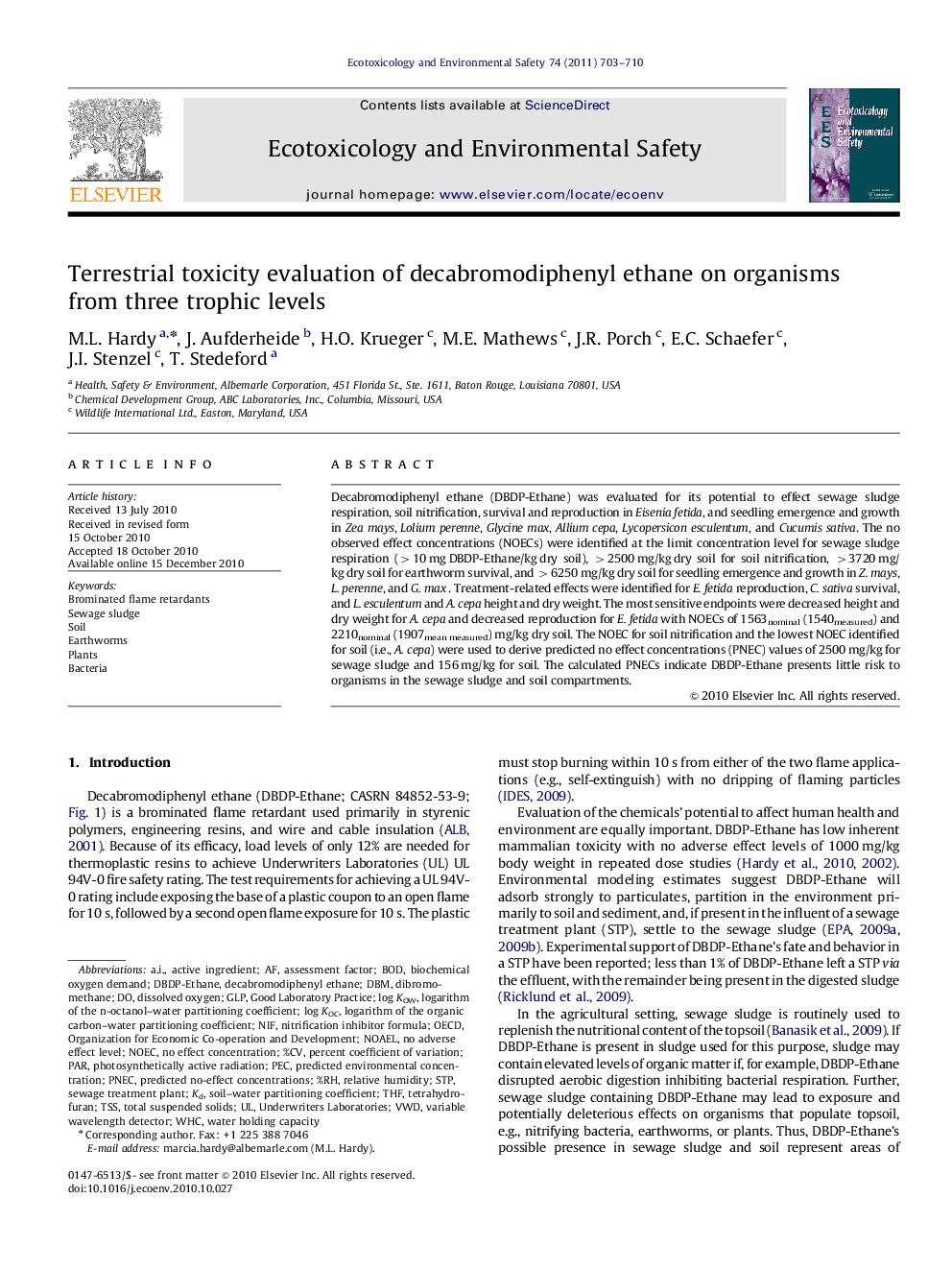| Article ID | Journal | Published Year | Pages | File Type |
|---|---|---|---|---|
| 4421448 | Ecotoxicology and Environmental Safety | 2011 | 8 Pages |
Decabromodiphenyl ethane (DBDP-Ethane) was evaluated for its potential to effect sewage sludge respiration, soil nitrification, survival and reproduction in Eisenia fetida, and seedling emergence and growth in Zea mays, Lolium perenne, Glycine max, Allium cepa, Lycopersicon esculentum, and Cucumis sativa. The no observed effect concentrations (NOECs) were identified at the limit concentration level for sewage sludge respiration (>10 mg DBDP-Ethane/kg dry soil), >2500 mg/kg dry soil for soil nitrification, >3720 mg/kg dry soil for earthworm survival, and >6250 mg/kg dry soil for seedling emergence and growth in Z. mays, L. perenne, and G. max . Treatment-related effects were identified for E. fetida reproduction, C. sativa survival, and L. esculentum and A. cepa height and dry weight. The most sensitive endpoints were decreased height and dry weight for A. cepa and decreased reproduction for E. fetida with NOECs of 1563nominal (1540measured) and 2210nominal (1907mean measured) mg/kg dry soil. The NOEC for soil nitrification and the lowest NOEC identified for soil (i.e., A. cepa) were used to derive predicted no effect concentrations (PNEC) values of 2500 mg/kg for sewage sludge and 156 mg/kg for soil. The calculated PNECs indicate DBDP-Ethane presents little risk to organisms in the sewage sludge and soil compartments.
